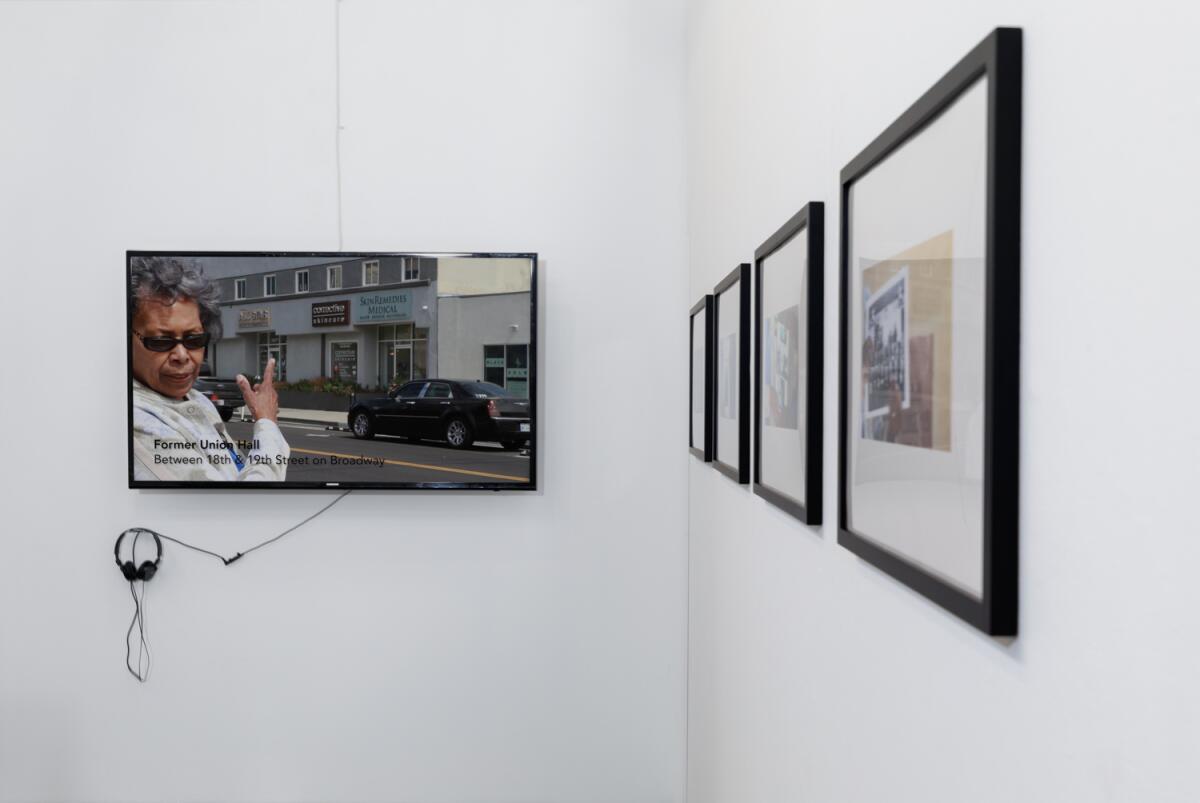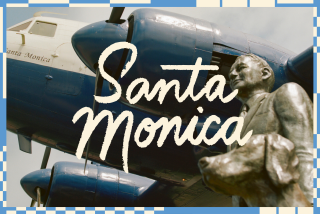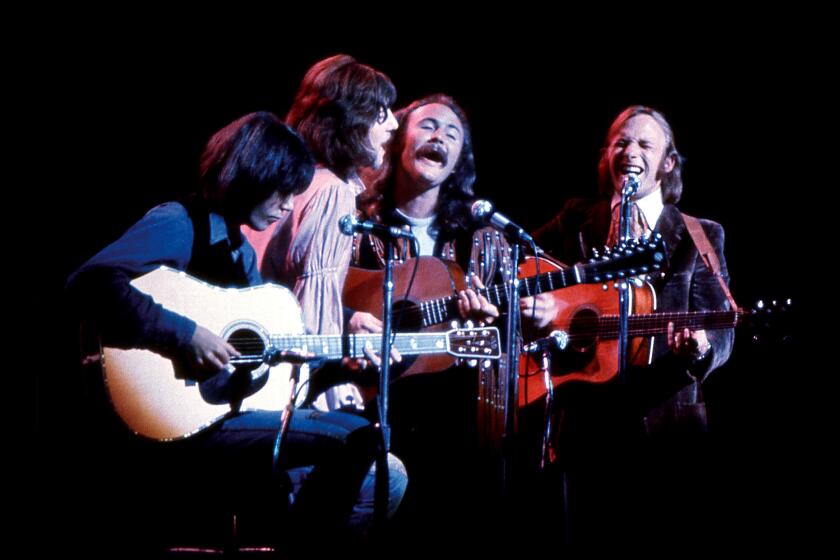This arts nonprofit mapped a pre-gentrified Santa Monica. With a new $3-million grant, the project is going statewide

- Share via
For the past eight years, the Santa Monica-based nonprofit 18th Street Arts Center has produced its Culture Mapping 90404 project. The community-led, interactive digital map highlights the cultural history of Santa Monica’s Pico neighborhood. The emphasis is on pre-gentrification, before the area was overrun with luxury homes and high-end grocery stores offering gourmet macrobiotic bowls. The project aims to highlight, interpret and archive past and present “cultural assets” — individuals, locations, organizations and events — that make up the area.
The map’s footprint — and the communities it will support — just got a whole lot bigger.
18th Street Arts Center has been awarded a $3.3-million California Creative Corps grant from the California Arts Council to expand the project statewide. The new project will employ artists and “culture bearers” — meaning individuals who engage in cultural practices — across the Golden State to create community-led cultural mapping projects that “foster well-being, social cohesion and cultural infrastructure.”
18th Street Arts Center is the longest-running artist residency in Southern California. Its current mapping project includes a companion website that features oral histories and photography documenting, in English and Spanish, more than 150 “cultural treasures” in the area. One of them is the Quinn Research Center, an archive documenting Black culture and history in Santa Monica and Venice; another is an interview with longtime 90404 resident and activist Ruth Alonzo, conducted by her son Daniel Alonzo, an artist.
18th Street Arts Center has also commissioned artists to create works informed and inspired by the project. That has included performances, exhibitions, murals and public art, a film, walking tours and a local artisan collective.
Arts and culture is the foundation of a community’s health and well-being, says 18th Street Executive Director Jan Williamson. So expanding the Culture Mapping project’s reach is especially important.
“The opportunity for 18th Street Arts Center to support [multiple] communities, by seeding a project, is very exciting,” Williamson says. “Because from our own experience in Santa Monica, we’ve seen how the community, as a whole, embraces the Culture Map towards multiple community policies and programs. We believe that will happen in these other communities once it gets started — it’s a kind of snowball and with the right intersection of community partners and artists, the snowball continues to grow.”
18th Street Arts Center will put out a call for applicants on Jan. 19. The center will invite applications, which will be free, from California practitioners of craft, design, dance, film, literary arts, oral tradition, interdisciplinary arts and other “culture keepers.” The 18th Street Arts Center says it is making a special effort to reach out to Indigenous California communities.
Forty participants will be chosen by regional panels through a statewide RFP (request for proposal). Participants, announced in mid-March, will be given a $1,000 stipend as well as professional coaching to realize a project proposal with a budget. The Atwater-based Clockshop will help the 40 participants craft their project proposals.
Of the 40 participants, 18 will be chosen by one statewide panel to receive a $65,000 salary with health benefits for one year. Their projects will also be fully funded, not to exceed $50,000 per project. These final participants — from 18 different California ZIP Codes — will be announced in May.
Applicants for both rounds must be living or working in California and their projects must be in a “quartile one” ZIP Code of the Healthy Places Index, which maps social conditions that drive health and well-being and which is produced by the Public Health Alliance of Southern California. Quartile one ZIP Codes score lower — between zero and 25% — in metrics of health and well-being on a scale of one to 100. There are several quartile one regions across California.
“Eight years of sustained collaboration with municipal partners (library, parks, housing, schools), research and evaluation partners (USC, Rand Corporation) and community groups representing the concerns of local Hispanic, Black, and Asian families,” 18th Street Arts Center says of the current Culture Mapping project, “allowed us to elevate under-recognized community treasures by pairing them with experienced artists to create community-relevant artworks. Through this, 18SAC has produced over 60 projects with artists and graduate students that address community concerns and wellbeing in Santa Monica.”
Expansion is the next logical, if ambitious, step.
“Scaling our experience with culture mapping to multiple communities across the state,” it adds, “along with our wraparound communications, evaluation, and training will anchor new infrastructure in each town, upon which they can build novel well-being initiatives with more local artists into the future.”
More to Read
The biggest entertainment stories
Get our big stories about Hollywood, film, television, music, arts, culture and more right in your inbox as soon as they publish.
You may occasionally receive promotional content from the Los Angeles Times.











